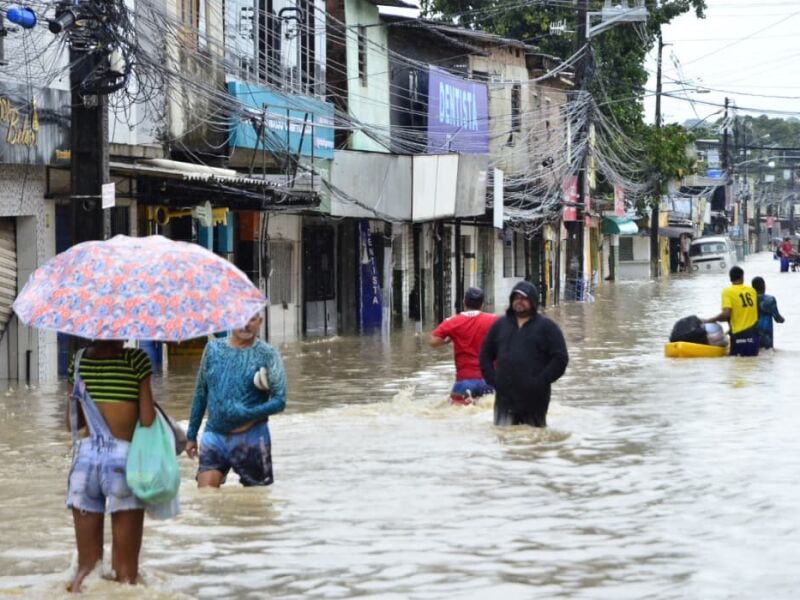Latin American and Caribbean countries face serious socioeconomic crises resulting from severe droughts and hydro-meteorological events such as heavy rains.
The increased frequency and intensity of these extreme weather events may jeopardize these nations’ fiscal balance – the difference between revenue collection and public spending.
Thus, they may have difficulties taking new loans to help manage the consequences of future natural disasters, assesses Graham Watkins, head of the climate change division at the Inter-American Development Bank (IDB).

“We are facing a dire situation. The data indicate that the number of natural disasters in the region has tripled compared to 50 years ago, affecting agricultural production, energy supply, and human health,” Watkins says.
“We estimate that the costs of these climate disasters that have occurred in the region are already around US$3 billion annually,” Watkins said in a talk during the Summit on Sustainable Development in Latin America and the Caribbean, held on September 6, 13, and 20 by Springer Nature.
According to the economist, all countries in the region face increasing frequency and intensity of extreme weather events and slow onset climate change, such as hurricanes that hit the northern part of Latin America and the Caribbean.
These events have influenced human mobility patterns and induced population displacement in the region, pointed out José Marengo, general coordinator of Cemaden (National Center for Monitoring and Alerts of Natural Disasters).
“The Andes, Northeast Brazil, and the northern countries of Central America are among the most sensitive regions to climate-related migration and displacement,” Marengo said.
The researchers pointed out that about 1 million people across the region have been migrating to cities due to extreme weather events and slow onset changes.
In moving to cities, these climate migrants have sought shelter in peripheral regions, which are more vulnerable to the impacts of climate change.
In this way, the risks are exacerbated. “We need to be able to break this vicious cycle,” Watkins said.
To do this, he said, it is necessary to increase previous investments in actions aimed at improving the region’s population’s resilience to climate change’s impacts.
The economist pointed out the development of early warning systems, contingency plans, and improving social protection systems.
“We know that every dollar invested upfront in actions aimed at increasing climate resilience and adaptation reduces between US$4 and US$7 in future spending,” he said.
The economist pointed out that another measure to reduce costs and human displacement due to extreme weather events is to ensure the rapid transfer of resources to affected people.
In Australia, people affected by floods or extreme droughts can receive financial compensation from government agencies within 8 hours, Watkins said.
“We need systems like this in Latin America and the Caribbean that allow for rapid disaster resilience responses. If we wait six months to respond to a disaster, people will have already moved to cities or other places,” he said.
Similar systems have already been implemented in countries like Ecuador and Peru to minimize the loss of livelihoods of families affected by extreme weather events and thus reduce the risk of forced migration, Watkins said.
“Countries with sound governance mechanisms, regulatory frameworks, and strong budgets can reduce economic and human losses caused by extreme weather events,” he said.
“Based on our experience, we estimate that a 1% increase in the ability to improve governance reduces human casualties from natural disasters by 3% and financial casualties by 6%,” he said.
REGIONAL DISPARITIES
According to data presented by Marengo, there are significant disparities among Latin American and Caribbean countries in climate services and early warning systems for extreme weather events.
Only six nations in the region have advanced capabilities in these aspects.
“The best way to be prepared to adapt to future climate change is to help people cope with current climate variability.
“If people are not adapted to what is happening now, it will be tough for them to be in the future. Even if there is funding for adaptation, they won’t know what to do,” he said.
In most countries, investments to deal with climate change have been allocated to mitigation.
Still, they need to be directed more towards adaptation, pondered Edwin Josue Castellanos, professor at the University of the Valley of Guatemala.
“It needs to be ensured that funding is used mainly on adaptation and not so much on mitigation,” he said.
“Most countries in the region already have both adaptation and mitigation plans, but most are in the early stages and do not have enough resources,” Castellanos pondered.
In the event participants’ assessment, the 17 Sustainable Development Goals of the United Nations’ 2030 Agenda can serve as a common roadmap for countries in the region to meet the challenges of dealing with climate change, extreme poverty, social inequalities, and the accelerating loss of natural resources.
“The Sustainable Development Goals reflect the desire of world leaders to focus on closing the gap between people in richer, high-income countries and people in poorer countries,” said David Nabarro, professor at Imperial College London.
“We need to get the rich nations to focus on what is happening to the poor nations. Otherwise, there will be a real difficulty in meeting the Sustainable Development Goals by 2030,” he assessed.
The scientific director of Fapesp (São Paulo State Research Support Foundation), Luiz Eugênio Mello, pointed out that the foundation indexed its portfolio of programs and supported projects to each of the 17 SDGs (Sustainable Development Goals) to facilitate access to related research and subsidize public policies in different areas.
In addition, it launched a website that provides access to the set of programs, initiatives, and projects supported by Fapesp articulated with the SDGs.
“We firmly believe that increasing the impact of science for the benefit of society is the path we need to move forward,” said Mello.
With information from Fapesp

